Nanotechnology is used within the immune response manipulation to deal with varied human illnesses. Within the current research, we explored the consequences of Au nanoparticles (AuNPs) on the lipopolysaccharide (LPS)-induced epithelial barrier dysfunction and inflammatory response of colonic epithelial NCM460 cells.
In keeping with the outcomes of cell counting equipment-Eight and circulate cytometry evaluation, the viability of NCM460 cells was inhibited, and the apoptosis was elevated after LPS therapy, and AuNPs reversed these modifications in a dose-dependent manner.
The permeability was evaluated by detecting the flux of fluorescein isothiocyanate-dextran and transepithelial electrical resistance. LPS enhanced the permeability and promoted barrier dysfunction of NCM460 cells. Enzyme-linked immunosorbent sorbent assay outcomes revealed that the concentrations of pro-inflammatory elements and nitric oxide had been elevated by LPS therapy and decreased by the AuNPs.
LPS aggravated the inflammatory response, which was rescued by the AuNPs. Furthermore, LPS promoted the activation of the nuclear issue kappa-B and extracellular signal-regulated kinase/c-Jun NH-terminal kinase signaling pathways, which had been inhibited by AuNPs.
α‑rhamnrtin‑3‑α‑rhamnoside exerts anti‑inflammatory results on lipopolysaccharide‑stimulated RAW264.7 cells by abrogating NF‑κB and activating the Nrf2 signaling pathway
α‑rhamnrtin‑3‑α‑rhamnoside (ARR) is the principal compound extracted from Loranthus tanakae Franch. & Sav. Nonetheless, its underlying pharmacological properties stay undetermined. Irritation is a protection mechanism of the physique; nevertheless, the extreme activation of the inflammatory response may end up in bodily damage.
The current research aimed to analyze the consequences of ARR on lipopolysaccharide (LPS)‑induced RAW264.7 macrophages and to find out the underlying molecular mechanism. A Cell Counting Equipment‑8 assay was carried out to evaluate cytotoxicity.
Nitric oxide (NO) manufacturing was measured by way of a NO colorimetric equipment. Ranges of prostaglandin E2 (PGE2) and proinflammatory cytokines, IL‑1β and IL‑6, had been detected utilizing ELISAs. Reverse transcription‑quantitative (RT‑q)PCR evaluation was carried out to detect the mRNA expression ranges of inducible nitric oxide synthase (iNOS), cyclooxygenase‑2 (COX‑2), IL‑6 and IL‑1β in LPS‑induced RAW246.7 cells.
Western blotting, immunofluorescence and immunohistochemistry analyses had been carried out to measure the expression ranges of NF‑κB and nuclear issue‑erythroid 2‑associated issue 2 (Nrf2) signaling pathway‑associated proteins to elucidate the molecular mechanisms of the inflammatory response. The outcomes of the cytotoxicity assay revealed that doses of ARR ≤200 µg/ml exhibited no vital impact on the viability of RAW264.7 cells.
The outcomes of the Griess assay demonstrated that ARR inhibited the manufacturing of NO. As well as, the outcomes of the ELISAs and RT‑qPCR evaluation found that ARR lowered the manufacturing of the proinflammatory cytokines, IL‑1β and IL‑6, in addition to the proinflammatory mediators, PGE2, iNOS and COX‑2, in LPS‑induced RAW264.7 cells.
Immunohistochemical evaluation demonstrated that ARR inhibited LPS‑induced activation of TNF‑related issue 6 (TRAF6) and NF‑κB p65 signaling molecules, whereas reversing the downregulation of the NOD‑like receptor household CARD area containing 3 (NLRC3) signaling molecule, which was in keeping with the outcomes of the western blotting evaluation.
Immunofluorescence outcomes indicated that ARR lowered the rise of NF‑κB p65 nuclear expression induced by LPS. Moreover, the outcomes of the western blotting experiments additionally revealed that ARR upregulated heme oxygenase‑1, NAD(P)H quinone dehydrogenase 1 and Nrf2 pathway molecules.
In conclusion, the outcomes of the current research advised that ARR might exert anti‑inflammatory results by downregulating NF‑κB and activating Nrf2‑mediated inflammatory responses, suggesting that ARR could also be a beautiful anti‑inflammatory candidate drug.
Oxymatrine inhibits neuroinflammation byRegulating M1/M2 polarization in N9 microglia by means of the TLR4/NF-κB pathway
Microglia are the first immune cells concerned within the immune response, irritation, and damage restore within the central nervous system. Below completely different stimuli, the twin polarization of classically-activated M1 microglia and anti inflammatory selectively-activated M2 microglia is noticed. Oxymatrine (OMT) exerts varied anti-inflammatory and neuroprotective results, however the mechanism underlying its motion stays unclear.
Within the current research, we investigated the consequences of OMT on the polarization of M1/M2 microglia in a lipopolysaccharide (LPS)-induced irritation mannequin with a view to elucidate the potential molecular mechanism of motion of OMT in vitro. We first used a Cell Counting Equipment-8 (CCK-8) to guage the consequences of various concentrations OMT on the viability of N9 microglia to find out the suitable focus for follow-up experiments.
Subsequent, Griess reagent and enzyme-linked immunosorbent assay (ELISA) kits had been used to detect the expression of the inflammation-related elements nitric oxide (NO), tumour necrosis factor-alpha (TNF-α), and interleukin (IL)-6, -1β, and -10. To judge the protecting results of OMT, the ultrastructure of the cells was noticed utilizing electron microscopy.
Immunofluorescence, circulate cytometry, and western blotting had been carried out to guage the consequences of OMT on the next markers of M1 and M2 microglia: CD16/32, CD206, Arginase-10 (Arg-1), and inducible nitric oxide synthase (iNOS). Lastly, western blotting and quantitative polymerase chain response (qPCR) had been used to detect elements related to the Toll-like receptor 4/nuclear factor-κB (TLR4/NF-κB) signalling pathway with a view to discover the potential mechanism by which OMT regulates microglial polarization.
The viability of N9 cells didn’t lower when handled with a focus of 1000 μg/mL OMT. Electron microscopy revealed {that a} focus of 100 μg/mL OMT exerted a protecting impact on N9 cells stimulated by LPS.
The outcomes of the current research indicated that OMT inhibited the over-activation of microglia, elevated the degrees of the M2 marker IL-10, decreased the degrees of the M1 markers NO, TNF-α, IL-6, and IL-1β, promoted the polarization of N9 microglia to the M2 phenotype, and controlled M1/M2 polarization within the microglia by inhibiting TLR4/NF-κB signalling, which successfully attenuated the LPS-induced inflammatory response.
Thromboxane A2 receptor antagonist SQ29548 suppresses the LPS‑induced launch of inflammatory cytokines in BV2 microglia cells by way of suppressing MAPK and NF‑κB signaling pathways.
Irritation within the mind, characterised by the activation of microglia, is hypothesized to take part within the pathogenesis of neuronal problems. It’s proposed that thromboxane A2 receptor (TXA2R) activation is concerned in thrombosis/hemostasis and irritation responses.
Within the current research, the anti‑inflammatory results of SQ29548 on lipopolysaccharide (LPS)‑stimulated BV2 microglial cells and its molecular mechanisms had been investigated. Within the BV2 cell line, LPS‑stimulated nitric oxide (NO) and inflammatory cytokine launch, and the phosphorylation of mitogen‑activated protein kinases (MAPKs) and the nuclear issue (NF)‑κB had been assessed utilizing an NO assay equipment, reverse transcription-quantitative polymerase chain response and western blotting, respectively.
 Assay Kit) Nitric Oxide (NO) Assay Kit |
|
abx294028-50g |
Abbexa |
50 µg |
Ask for price |
 Assay Kit) Nitric Oxide (NO) Assay Kit |
|
abx294029-100g |
Abbexa |
100 µg |
Ask for price |
 Assay Kit) Nitric Oxide (NO) Assay Kit |
|
abx294029-20g |
Abbexa |
20 µg |
EUR 287.5 |
 Assay Kit) Nitric Oxide (NO) Assay Kit |
|
abx294029-50g |
Abbexa |
50 µg |
Ask for price |
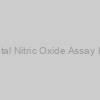 Total Nitric Oxide Assay Kit |
|
EGQA0078 |
EnoGene |
50 tests |
EUR 145 |
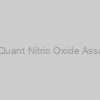 RealQuant Nitric Oxide Assay Kit |
|
N0100-025 |
GenDepot |
250 Assays |
EUR 1113.6 |
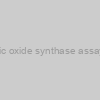 Nitric oxide synthase assay kit |
|
ETF0025 |
EnoGene |
100 assays |
EUR 300 |
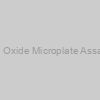 Nitric Oxide Microplate Assay Kit |
|
DLSM0063 |
DL Develop |
100 Assays |
EUR 297.5 |
|
Description: Detection and Quantification of Nitric Oxide Content. |
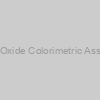 Nitric Oxide Colorimetric Assay Kit |
|
55R-1352 |
Fitzgerald |
200 assays |
EUR 553 |
|
|
|
Description: Assay Kit for detection of Nitric Oxide activity in the research laboratory |
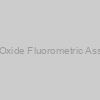 Nitric Oxide Fluorometric Assay Kit |
|
GWB-AXR164 |
GenWay Biotech |
2 x 96 assays |
Ask for price |
 Nitric Oxide Colorimetric Assay Kit |
|
GWB-AXR175 |
GenWay Biotech |
200 assays |
Ask for price |
 Nitric Oxide Fluorometric Assay Kit |
|
K2099-200 |
ApexBio |
200 assays |
EUR 595 |
|
Description: Detects total nitrate/nitrite |
In vitro research demonstrated that SQ29548 inhibited LPS‑stimulated BV2 activation and lowered the mRNA expression ranges of interleukin (IL)‑1β, IL‑6, tumor necrosis issue‑α and inducible NO synthase by way of inhibition of MAPKs and the NF‑κB signaling pathway. SQ29548 inhibited the LPS‑induced inflammatory response by blocking MAPKs and NF‑κB activation in BV2 microglial cells.




